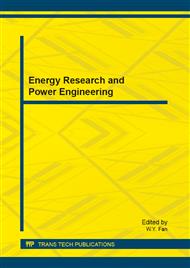p.719
p.727
p.732
p.737
p.743
p.748
p.754
p.760
p.767
Numerical Analysis on Parameters Adjustment of Smoke Control System in a Complicated Underground Commercial Zone
Abstract:
The technical parameters adjustment of smoke control system in a complicated underground commercial zone is studied by numerical simulations. An underground fire model (it encloses a hotel, a supermarket, and a net bar) and five typical fire scenarios are designed. The Fire Dynamic Simulator code is used to investigate the characteristics of fire spread and smoke movement, and obtain the available safety egress times in different fire scenarios. The required safety egress time is calculated based on the data of actual simulation exercises and numerical simulation by Building EXODUS. The simulation results show that, when the smoke exhaust rate is 5.56 cubic meter per second and air low rate reaches 3.89 cubic meter per second simultaneously, the available safety egress time is more than the required safety egress time.
Info:
Periodical:
Pages:
743-747
Citation:
Online since:
July 2013
Authors:
Price:
Сopyright:
© 2013 Trans Tech Publications Ltd. All Rights Reserved
Share:
Citation:


